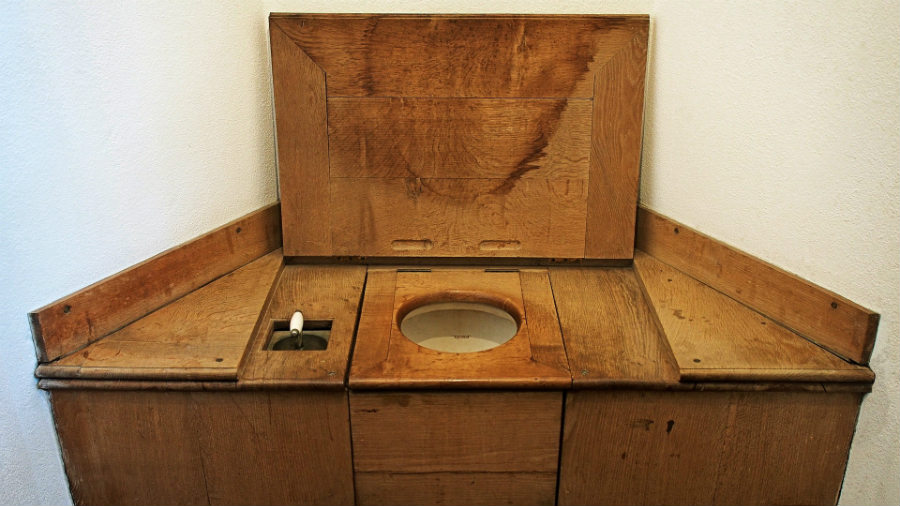
Humanity has come a long way to get to the modern toilet that we know today. Ancient civilizations used things such as pots filled with sand, and later, toilet seats that were built above streams of flowing water. Keep reading to see how we got from buckets of sand to the flushing toilet of today.
The Invention of the Flush Toilet
Historians date the first mention of a flush toilet back to 1596, when the godson of Queen Elizabeth I, Sir John Harington, described it in writing. According to his description, the toilet was an oblong bowl that was two feet deep and waterproofed with a mixture of pitch, resin, and wax.
The water for the toilet came from a cistern on the upper floor of Harington’s residence, and one flush took 7.5 gallons of water. Harington had a device like this built for Queen Elizabeth I’s palace, although common folk didn’t take to the flush toilet until a couple of hundred years later.
The First Flush Toilet Patent
It wasn’t until 1775 that the first patent for a flush toilet was requested by Englishman Alexander Cumming. He was the one who came up with the S-shaped pipe beneath the toilet bowl that kept odors and gases from the sewers out. The pipe also kept water in, creating a neater bathroom experience.
About a hundred years later, Thomas Crapper took that idea and made it into a line of flush toilets. Crapper is often cited as the inventor of the flush toilet (hence the slang term “crapper” for toilet), but he merely took an existing idea and ran with it. It turns out that the name “crapper” was coined by American soldiers in England who noticed Crapper’s prolific toilet business. They started using the term and brought it back to the States and the rest is history.
Crapper didn’t invent the toilet, but he did create the ballcock, also known as the toilet fill valve. This device is still used in toilets today and helps the water tank fill up with just enough water to distribute to the bowl. His inventions and sales efforts got the attention of King Edward VII, who commissioned Crapper to build private bathrooms in the royal palace.
20th Century Toilets
Crapper worked alongside other inventors who helped him improve the flush toilet and its various parts and components. Among those contemporaries were Henry Doulton, George Jennings, Edward Johns, and Thomas Twyford. They were responsible for implementing some of the changes that occurred to toilets throughout the 20th century.
As time went on, more changes came to flush toilets, including flush valve, water tanks that sat on top of the bowl, and even rolls of toilet paper. The Industrial Revolution helped the flush toilet to become more common among everyday people rather than just the nobility. Toilets still used the original S-shaped pipe invented by Alexander Cummings.
In 1906, William Elvis Sloan invented the Flushometer, which directly accessed the supply lines to force pressurized water into the toilet for more efficient flushing. Today, flushometers are most likely to be seen in commercial buildings that have a large supply line rather than individual water tanks for each toilet.
Flush Toilets Today
These days, flush toilets come in all kinds of shapes and sizes, from one-piece models to high tank toilets, smart toilets, and double-flush toilets. The Energy Policy Act of 1992 was put into effect in 1994 and required all toilets made and installed after that year to use a maximum of 1.6 gallons per flush.
High-efficiency toilets began to show up more and more, with low-flow and dual-flush toilets taking the lead. These flush toilets allowed individuals to use less water per flush. In the case of the dual-flush toilet, a half flush could use as little as 0.8 gallons.
Most recently, flush toilets have used the latest smart technology to offer all kinds of amenities, from touchless flushing, heated seats, and more. Japan is one of the countries that started using vacuum water closets (those seen on airplanes) in more residential properties.
Now that you know more about where the humble toilet came from, you might be a bit more grateful for how this device makes life much simpler.
